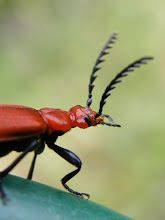
As the bird, beast and insect activity has hotted up this month, the weather has cooled down, and the summery weather of April has changed to chilly winds and risk of frost – May is the cruellest month this spring! The green beings don’t seem to mind too much though – the trees have most of their spring green gear on, and the garden and countryside is filling out again.
We keep adding more fruit trees to our little cottage garden, and now have cherries, crab apple, damson and greengage. The blossom has been gorgeous – nothing says spring to me so much as fruit blossom, and it is all the more precious as it is so fleeting. If we don’t take time out to enjoy the spring blossom we have another whole year to wait! Maybe we should copy the Japanese and have cherry blossom festivals – bit chilly for picnics in the park just yet though…
The bluebells too are ringing out their brief but glorious song. Another must in the spring is a trip to a bluebell wood. Our Cam Valley botany walks always include one such trip, and this year it was to Rush Hill Wood, a private wood on the edge of a golf course – by courtesy of the owner of course! Packed with bluebells, wood anemones and primroses, it is also home to the pretty rare Herb Paris (Paris quadrifolia). The flower is very unusual, as the petals are quite inconspicuous and what stands out most are the reproductive parts. Maybe that is why it was used as an aphrodisiac! It has been used medicinally but is pretty poisonous, so it’s use nowadays is mostly confined to homoeopathy – Mrs Grieve says it used to be used in Russia to treat madness!
We have bluebells in our garden too, but they are the Spanish variety. You can tell them apart by the shorter, fatter flowers of the Spanish, and the fact that they grow around the stem, whereas our native bluebells grow from one side of the stem and have longer, more slender flowers. They can interbreed apparently, and so some people think we should eradicate the spanish variety – or maybe it’s like the red and grey squirrels, and the Spanish ones will take over. These immigration issues are not confined to humans! Should we become one big family melting pot, or isolate and keep our differences?...
Another plant we have in our garden now is Greater Celandine (Chelidonium majus), courtesy of our friend Zoe. It’s a very striking plant and has beautifully-shaped leaves – be aware that it’s a strong coloniser though – if you have it in your garden you have to be vigilant with it’s offspring! It’s also fairly toxic, so maybe not one to have if there are children around. It has been used medicinally for centuries, and these days is mostly used by herbalists for liver complaints and externally for warts (the bright orange sap). One of it’s common names is Swallow Wort, presumably because of an old story about swallows using it. Medieval herbalist, Tabernaemontanus, wrote that swallows were seen to pluck off celandine leaves and rub them on unopened eyes of their young. This was then seen as an indication of it’s use as a medicine for eye complaints. I wonder if anyone these days has seen swallows do this!













No comments:
Post a Comment